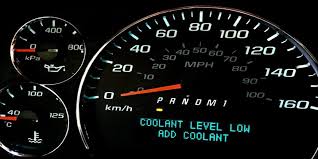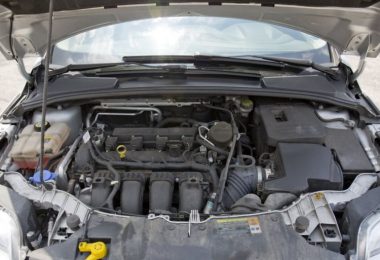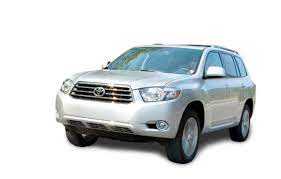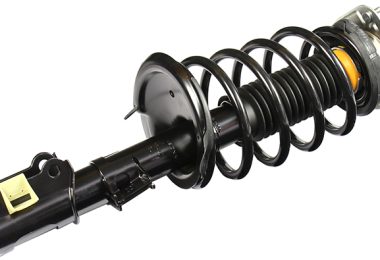Engine running hot but not overheating is quite challenging; If your car is running hot but not actually overheating, it’s time to check the cooling system. There are several things that could be causing this problem. The thermostat and radiator cap can both fail, which will cause your car to run hot but not overheat. Flushing out the cooling system and cleaning the radiator fins are also good ideas when troubleshooting a vehicle’s heat gauge readings.
If your engine is running hot but not overheating, there are several things you can check before taking it to the mechanic. The good news is that most times this kind of problem can be easily fixed and your car will be back up and running in no time.
Engine malfunction light is on.
The engine malfunction light is on. The first thing you should do is check the engine light to see what the problem is. If it’s showing a coolant or oil level issue (or any other issue), then address that first. You can usually reset the light by turning off your car and restarting it, but if it continues to come on, your car may need further evaluation by a professional mechanic.
If you’ve ruled out everything else and are still seeing excessive overheating, then there’s an underlying problem that needs more attention from a professional mechanic—but don’t feel bad! It takes experience and knowledge of automotive systems to determine what those problems might be and where they are located within your vehicle’s engine compartment
Bad thermostat
A thermostat is a valve that opens and closes to regulate the flow of coolant. If your engine is running hot but not overheating, it’s possible that your thermostat is stuck open. This means that there’s no restriction on the flow of coolant through your radiator, which results in the engine running warm or hot but not overheating.
To replace a thermostat, remove it from its housing (usually located in the engine block), then install its replacement.
The radiator fan isn’t working.
- Check the fuse.
- Check the relay.
- Check the fan motor and wiring harness for damage, corrosion or wear.
- Check whether you can hear the fan running when you press your foot on or near the accelerator pedal. If you don’t hear it run at all, but do hear it run when you turn on your heater blower motor (to check), then your problem is most likely a faulty blower motor control module or its wiring harness; this would also make sense if you can hear only one speed of fan operation (high) and not two speeds (low/high). In this case, replace both radiator fans and blower motors before continuing with testing. If all else fails to solve your overheating problem after replacing these parts (or if these components are working fine), then proceed immediately to step 3 below before anything else happens—you’ve got an engine burning up!
The cooling fan relay is bad.
You can check the cooling fan relay by using a multimeter to see if it’s working. The relay is a switch that controls the power to the cooling fan, so if you have no power going to your fans, it may be bad.
You’ll find this relay under your hood. It will be labeled as “cooling fan,” or something similar. To test it with a multimeter, touch one probe of the multimeter to each terminal on the relay (the probes should be connected together). If you get continuity reading from both sides when you do this, then your relay is good and not causing problems with your engine overheating. If there’s no continuity reading at all—meaning nothing happens when you touch both probes together—then chances are that either there is no power going into/out of this part/component or something else has gone wrong in its circuit path which would cause this component not work properly anymore (and thus cause overheating).
If there isn’t any continuity between these two points because they’re deadbolts while they should normally take some kind of charge then remove whatever connectors currently connect them together inside their housing before replacing them back with new ones made out of copper wire instead so they’ll conduct current better than plastic ones would otherwise do (and thus allow electricity flow).
Radiator cap is faulty.
The first thing you’ll want to check is your radiator cap. If it’s faulty, it can allow air bubbles into the cooling system, which could cause overheating. Read Also : How to Fix Engine Sounds Loud When Accelerating
To test a radiator cap:
Before you remove any fasteners or other parts of the cooling system, make sure to disconnect power from any electrical components in the engine compartment and drain all water from hoses and pumps. If necessary, use an anti-freeze cleaner such as Tank Sealer to clean out corrosion that may have accumulated around the cap opening. Then place your thumb over the opening on top of a new cap (if you haven’t changed yours recently) and pump air into it until there are no more bubbles coming out of any drainage tubes connected to your radiator core. Next pressurize by hand until pressure builds up inside; then tighten down with pliers until snug.
Faulty Head gasket.
You may be experiencing head gasket failure if the coolant reservoir has been losing coolant, but you’re not overheating. This is because when the engine overheats, it usually causes leakage in other places as well. So if your car is overheating and you’re only losing coolant from the reservoir (and no other leaks), then it’s probably just a faulty head gasket.
Head gaskets are made of soft metal that seals in between an engine block and cylinder head. They do this by creating a vacuum seal between them; this allows for expansion and contraction and prevents oil leakage into combustion chambers.
If your car is running hot but not over heating, then it could be due to an issue with a bad or defective head gasket, which would allow air pressure to get into your cooling system along with steam or water vapor from combustion chambers during operation within normal temperatures ranges which can cause serious damage if left unchecked long enough so be sure to have these issues checked out ASAP!
An engine running hot can do major damage to your car, but before you spend lots of money, check these common causes of problems with thermal control
- The engine malfunction light is on. This is a sure sign that something’s not right with the cooling system. If this light is blinking or constantly illuminated, it means there’s a problem with one or more of your sensors that monitor temperature and fuel flow—and it might be worth taking in for repair right away.
- Bad thermostat. A bad thermostat can cause an overheating problem by restricting circulation to coolant in the radiator tank (the part where water flows through). You’ll need a new one if you suspect this issue may be causing your overheating issue. Read Also : Function of a Thermostat
Conclusion
If you’re having problems with your engine running hot but no overheating, there are a few things that you can check. You should start by checking the thermostat and replacing it if it seems to be stuck open or closed. It’s also important to make sure that your radiator cap is properly functioning so that there isn’t any pressure build up in your cooling system. You might also want to flush out the radiator fins once every year or two as well because buildup can create issues as well.
A car that’s running hot can cause major damage to your engine. But before you spend lots of money on repairs, check the obvious. Make sure that you have good coolant in the system and that your radiator is not blocked by leaves or other debris. Also, make sure there are no leaks in the pipes leading from the radiator cap and head gasket area. If none of these things are causing problems with thermal control, then look at other sources such as an overheating thermostat or fan relay failure.







